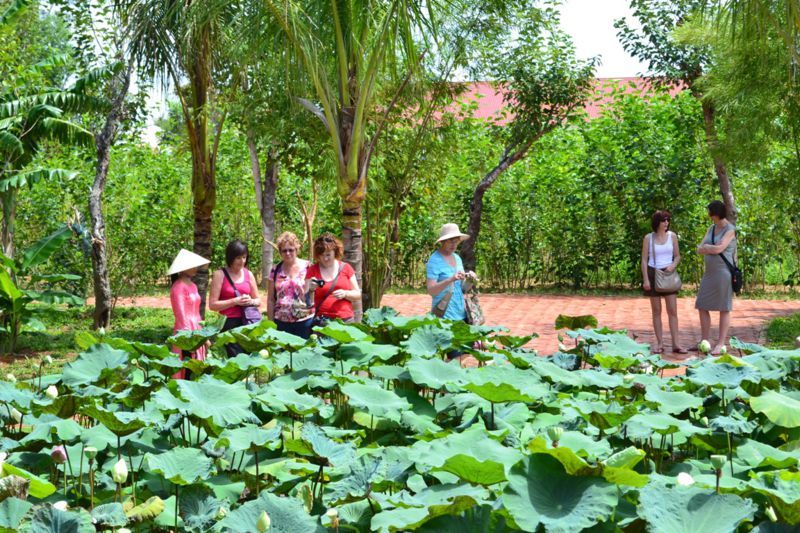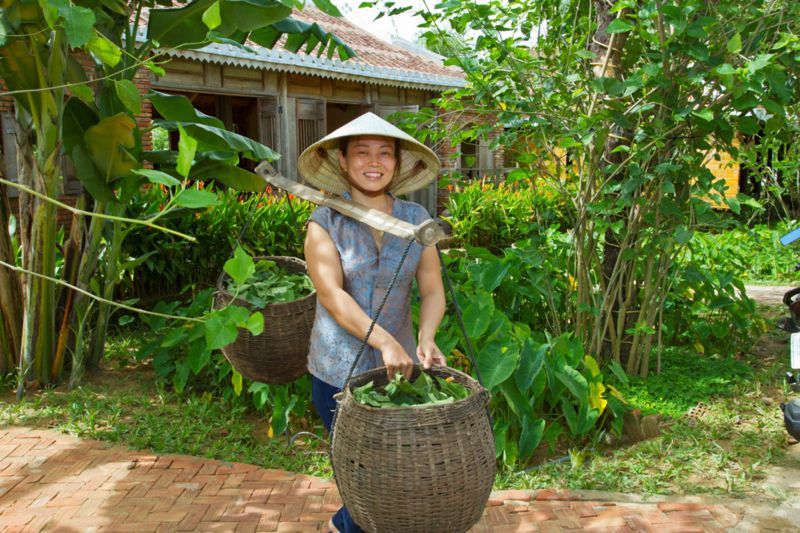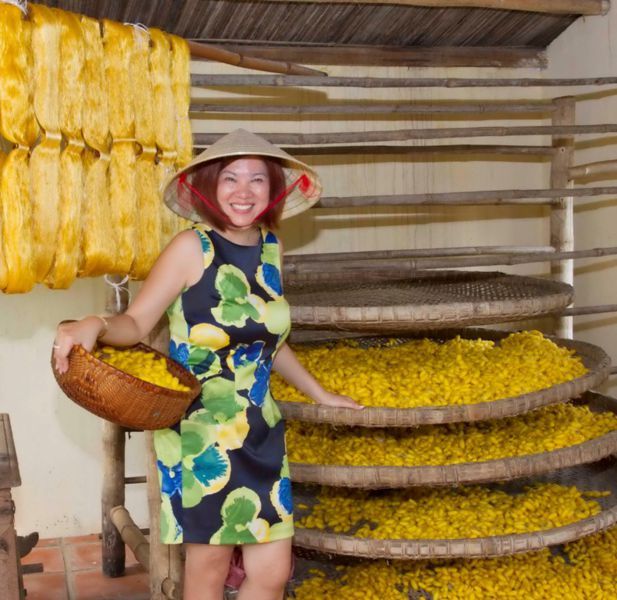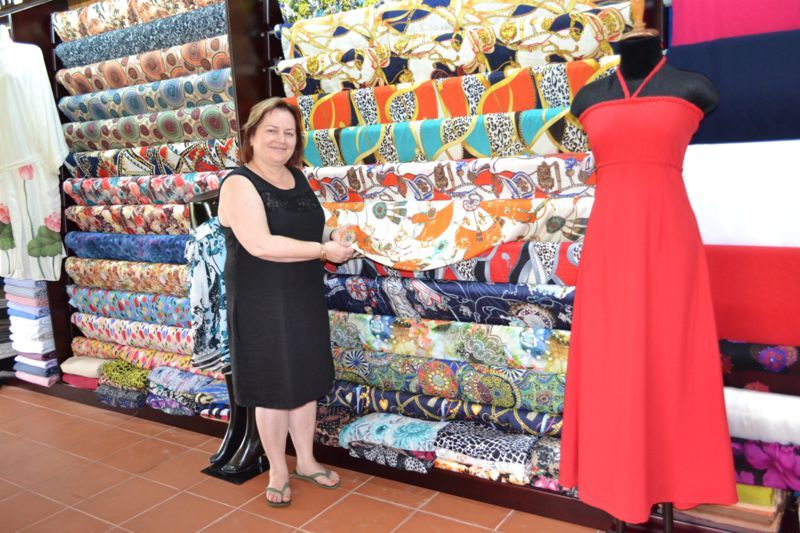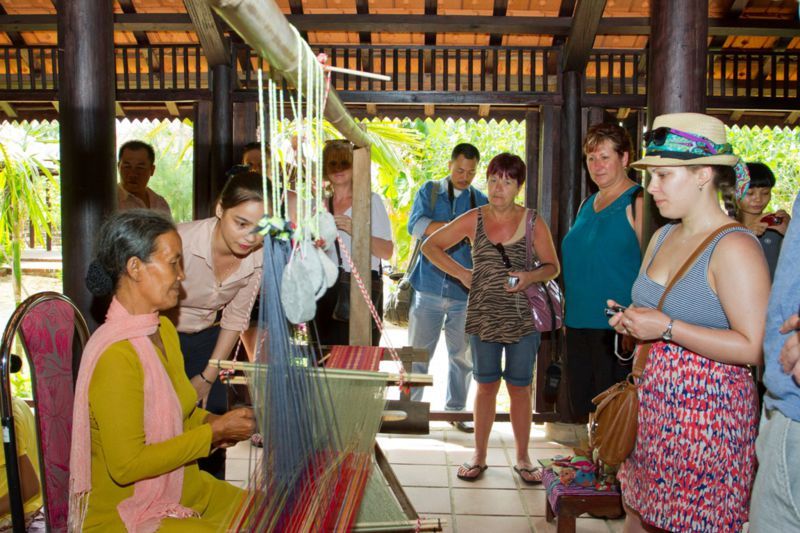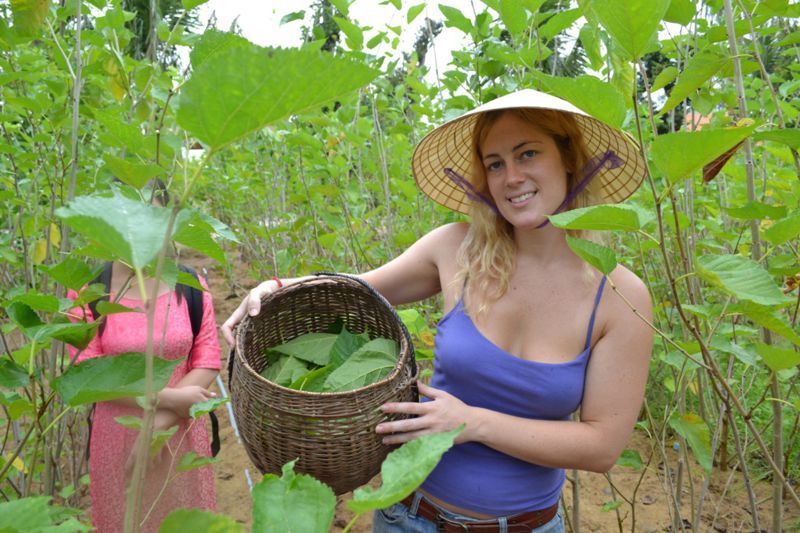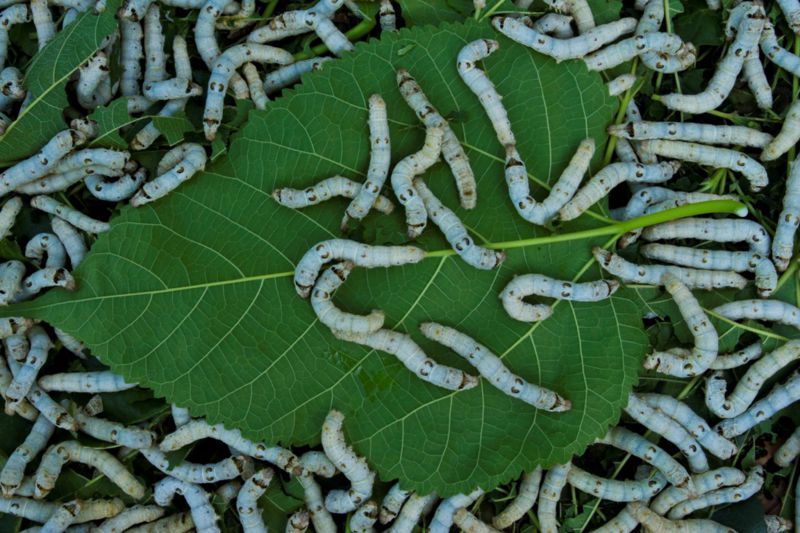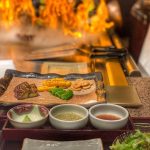Fantastic trip to Hoi An Silk Village — One of the traditional craft villages in Hoi An
The “Silk Path” mark in the part and old memories of the Champa clothing show vividly in the experience of the traditional silk hamlet of the Champa and Vietnamese people with mulberries in Quang Nam province, the homeland of Doan Quy Phi, known as the Queen of Silk.
Ancient mulberry garden
Surprisingly, a beautiful green mulberry garden has developed in the old town of Hoi An. The swaying hammock is like a link between the past and the shady present. In the brief snooze at lunchtime, the narrative about a Japanese businessman’s Champa silk weaving reappears. Le Thai Vu, a young businessman from Quang Nam who now works in Sai Gon as the vice-chairman of a Japanese silk manufacturing corporation with over 160 years of experience, has built up the silkworm breeding outside with towering mulberry trees in Quang Nam.
“On the banks of the Thu Bon River in Quang Nam, mulberry trees are only taller than people’s heads, and silk worms are bred indoors.” For over four years, I had discovered old Champa mulberry frees mentioned by the Italian priest Cristophoro Borri in Southern Vietnam in 1621 while teaching in Hoi An,” stated Le Thai Vu.
After that, Le Thai Vu decided to “return” to Quang Nam and plant the Champa’s mulberry garden at no. 28, Nguyen Tat Thanh street, Hoi An, Quang Nam, naming it “Silk Village.” This big garden, in addition to Vietnamese mulberry gardens, includes 40 high Champas mulberry trees, some of which are hundreds of years old, brought over from Dai Loc midland, Duy Xuyen, Dien Ban the land of Bay Hien wearing hamlet Sai Gon. More than 400 years ago, this town helped to establish Quang Nam’s silk industry with the “silk road on the sea” and the prosperity of Hoi An harbor.
The swaying hammock is like a link between the past and the shady present. The intriguing characteristic is not concealed in the hanging hammock suspended from the mulberry trees, but on the leaves with veins resembling Champa designs, whereas Vietnamese mulberry leaves have an oval form.
The intriguing characteristic is not concealed in the hanging hammock suspended from the mulberry trees, but on the leaves with veins resembling Champa designs, whereas Vietnamese mulberry leaves have an oval form. The secret of outdoor silkworm rearing has been revealed: “that’s the technique of growing silkworm on the Champa’s mulberry trees,” said Le Thai Vu.
Feeling the past
You may taste the mulberry juice picked up in the garden and listen to the narrative of silk wearing in Quang Nam related directly with the Queen of cultivating mulberry and breeding silkworm in the traditional two learn to three-compartment home Vietnamese. “For more than 400 years, local people in Quang Nam have also been proud of a beautiful lady named Doan Thi Ngoc, who often grew mulberry trees, breed silkworm, and worn in Chien Son village, Dien Ban, Quang Nam,” said researcher Nguyen Duc Minh, Deputy manager of Management & Preservation center of Hoi An cultural heritage. She was regarded as Tam Tang and given the title Doan Quy Phi. ”
There were two silk harvests during the period. Various silk resources were transformed into high-quality silk goods as a result of the combination of local people’s experiences in Northern Vietnam, the Champa’s expertise, and the weaving secrets of Minh Huong’s local people.
“The Southern Vietnam contained so much silk that local people utilized it to weave nets and make ropes,” claimed priest Alexandre de Rhodes, who arrived in Hoi An at the end of 1624. Quang Nam offered a wide range of silk goods of various sorts. Le Quy Don said in his book “Phu Bien Tap Luc” that “Quang Nam’s silk is expertly manufactured” and that “local people in Thang and Dien districts can weave many sorts of silk goods.”
During the Nguyen era, silk cord and silk from Quang Nam and Southern Vietnam were shipped to Asian and Western nations via Hoi An seaport each year. Ships from Japan, Spain, and Holland sailed here to purchase silk. “The growing mulberry and raising silkworm career in Quang Nam in the 17th – 18th century was developed because of the fertile land, hardworking people, and the merit of Doan Thi Ngoc, who wholeheartedly encouraged the development of this career here,” said researcher Nguyen Phuoc Tuong of the Vietnam Association of Science and History.
Exciting Life Cycle
Quang Nam craftsmen begin collecting and boiling cocoons, unwinding silk string, and weaving to continue the silk journey. Le Thai Vu spoke passionately about the ancient Champa people’s weaving vocation in his narrative.
Champa’s people used to make brocade by driving the shuttle from My Son – Quang Nam to Ninh Thuan. The Vietnamese then used this knowledge to transfer to high-yielding hand weaving and machine weaving. Mr. Vo Dan, who was born in Quang Nam and was known as Cuu Dien, was a pioneer who was intimately associated with the Cuu Dien loom. In the 1930s and 1940s, he established Quang Nam silk weaving in Saigon, with diverse goods sold to many nations across the world.
“From tales to the present, I become quite emotional when I compare Champa’s mulberry leaves to Vietnamese mulberry leaves. I also collect mulberry leaves in order to breed silkworms, reel silk, weave silk, and rip silk. The most amazing aspect of the silkworm is that its life cycle finishes with….death!” said Jesel, an American visitor who had recently found the Silk Village.
According to Jesel, the silkworm will eat in three days and sleep in one day after hatching. In the second cycle, it will feed two days and sleep one day, and in the third period, it will feed three days and sleep one day. The silkworm will then eat freely for three weeks before spitting out silk and forming cocoons in the following time. After seven days, the cocoon will be transformed into a silkworm cocoon, and the cocoon will be broken to allow the silkworm to exit. “ What is the juvenile silkworm going to do first? It will mate in order to keep the race going. Normally, they will mate…after seven days, and the male silkworm will die immediately, while the female silkworm will lay eggs and then die.
Further information
Champa silk village (or Hoi An Silk Village) information
Hoi An ancient town features many famous attractions with many new traditional cultural villages. If you visit this region in spring, do not miss coming to Champa mulberry garden (or Silk village) at No 28, Nguyen Tat Thanh Street, Hoi An, Quang Nam.
Address: 28 Nguyen Tat Thanh, Hoi An, Quang Nam province, Viet Nam











